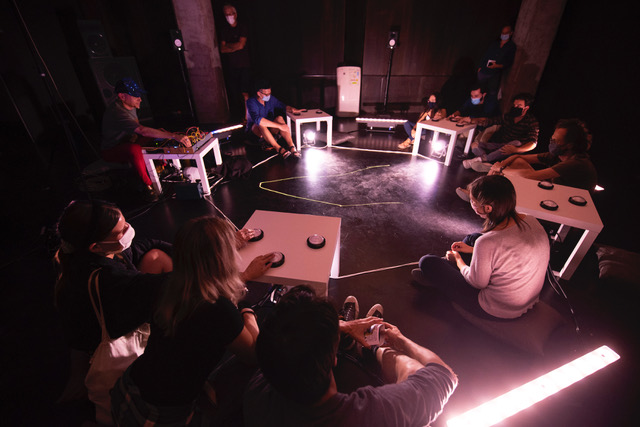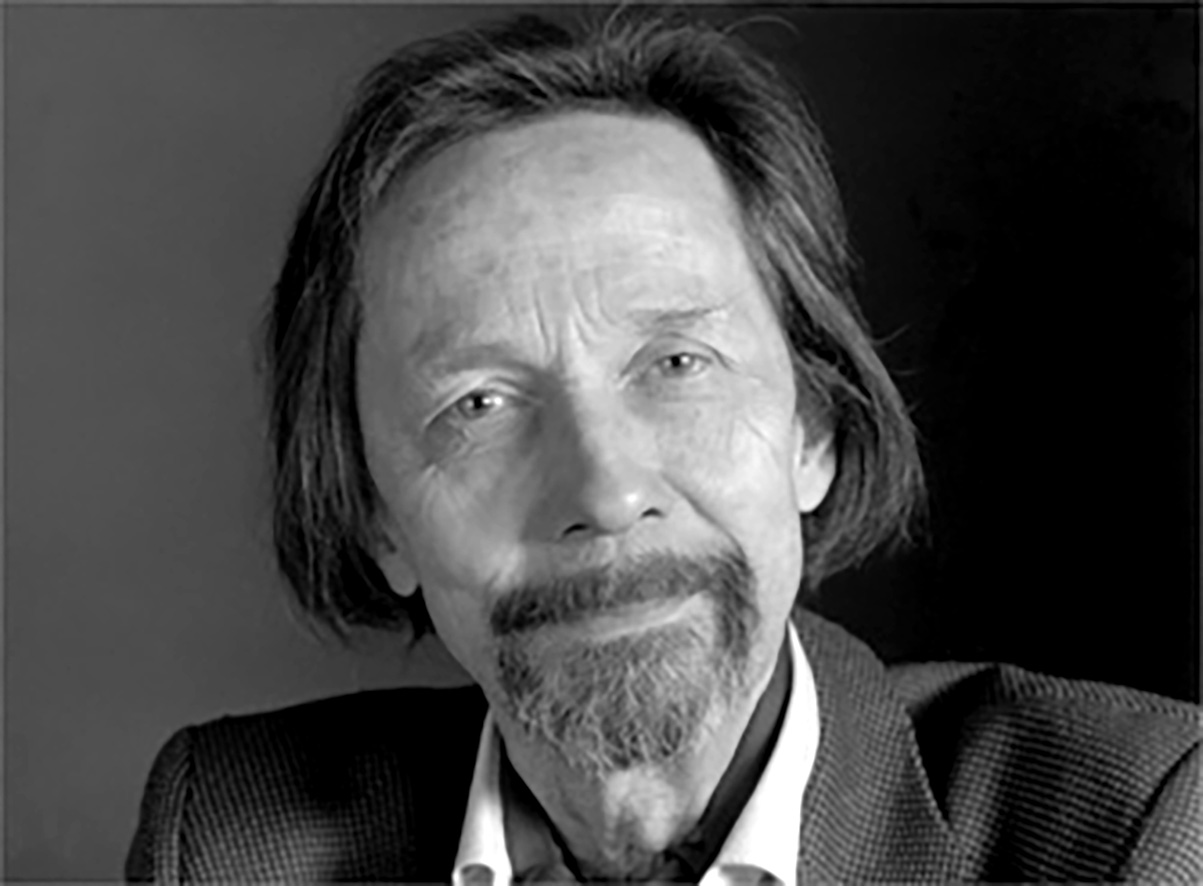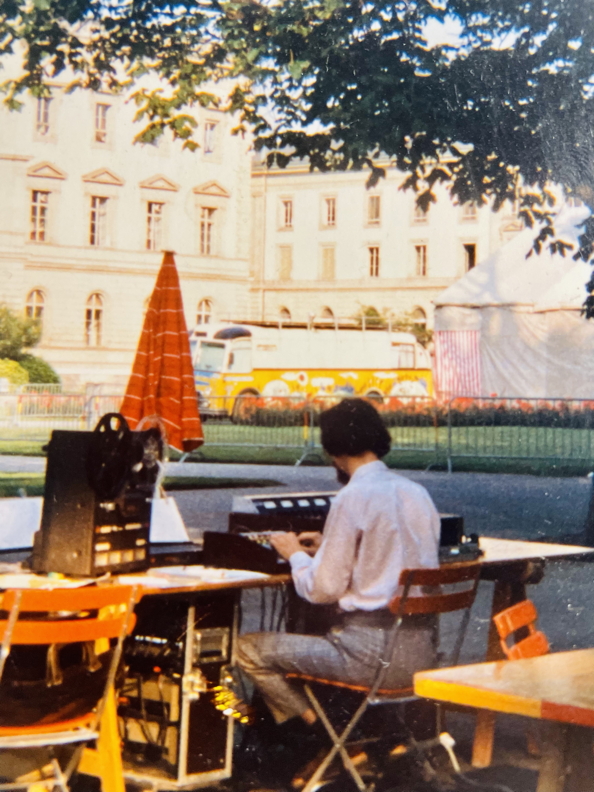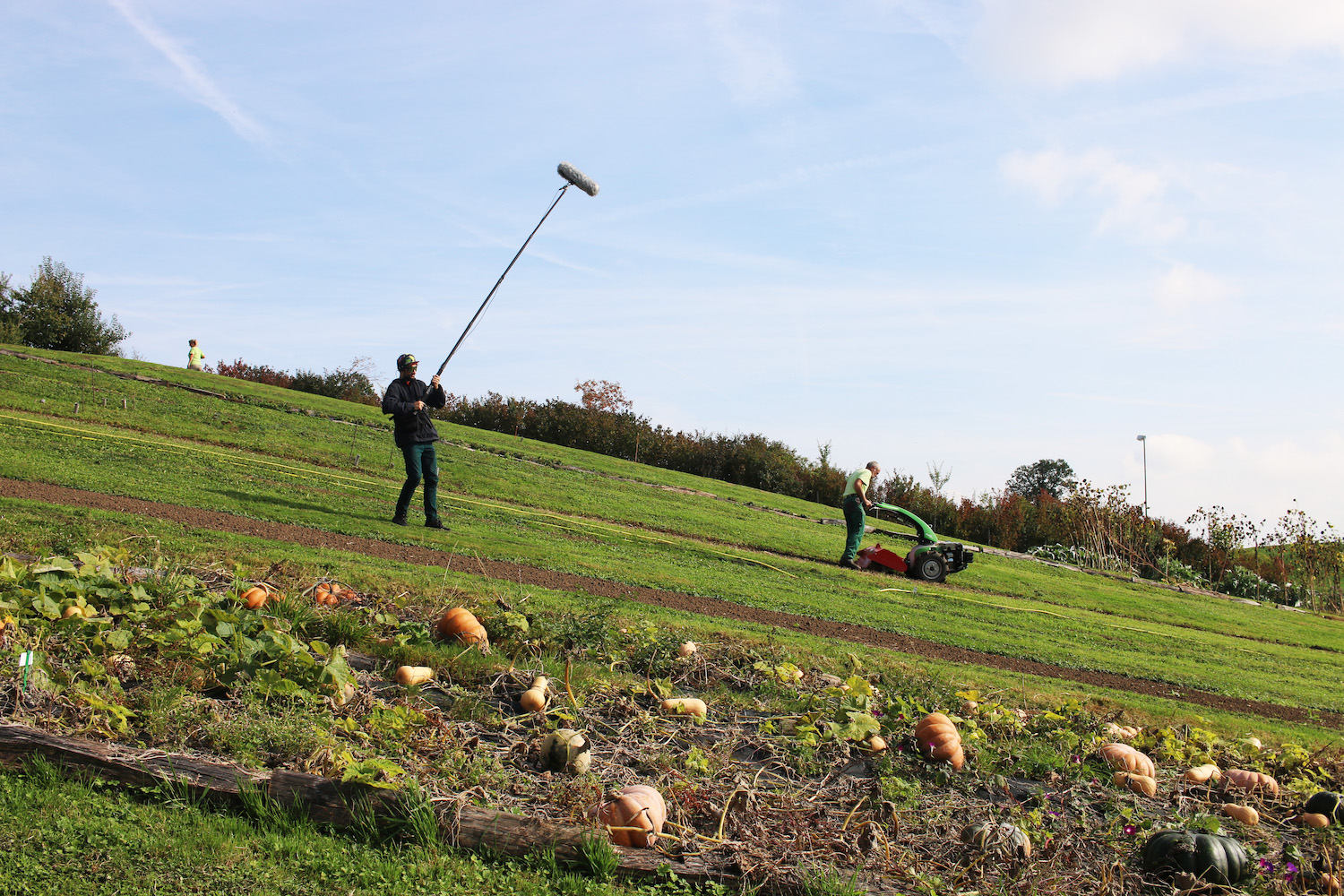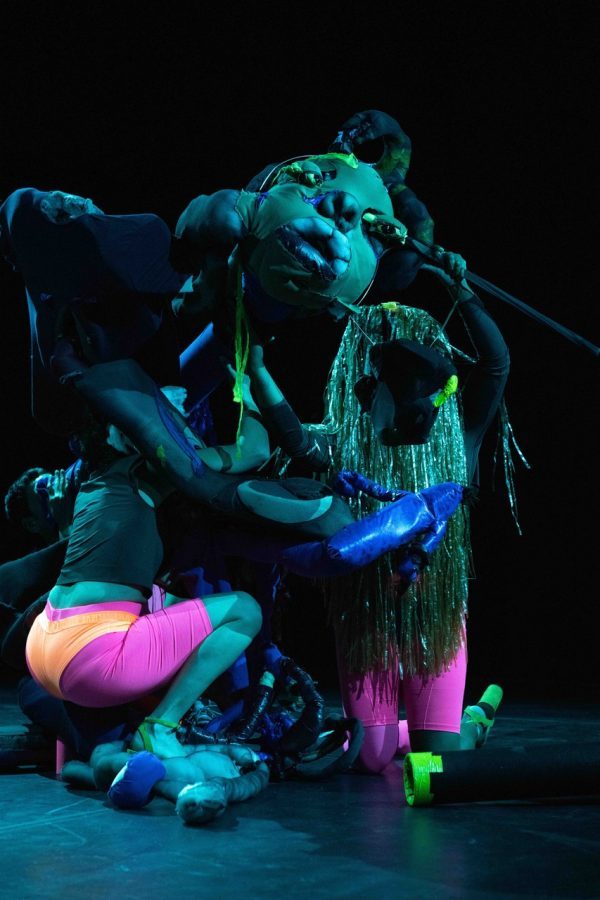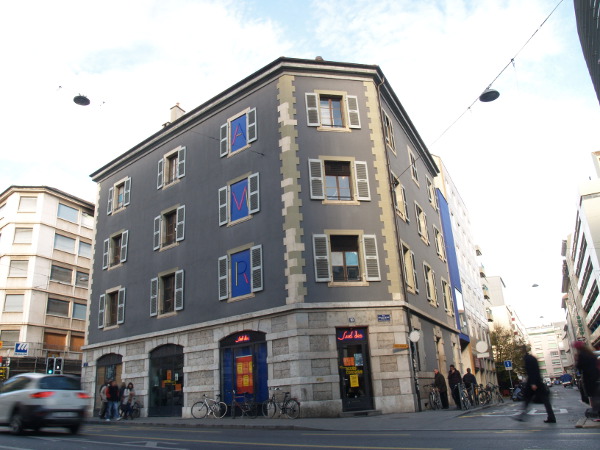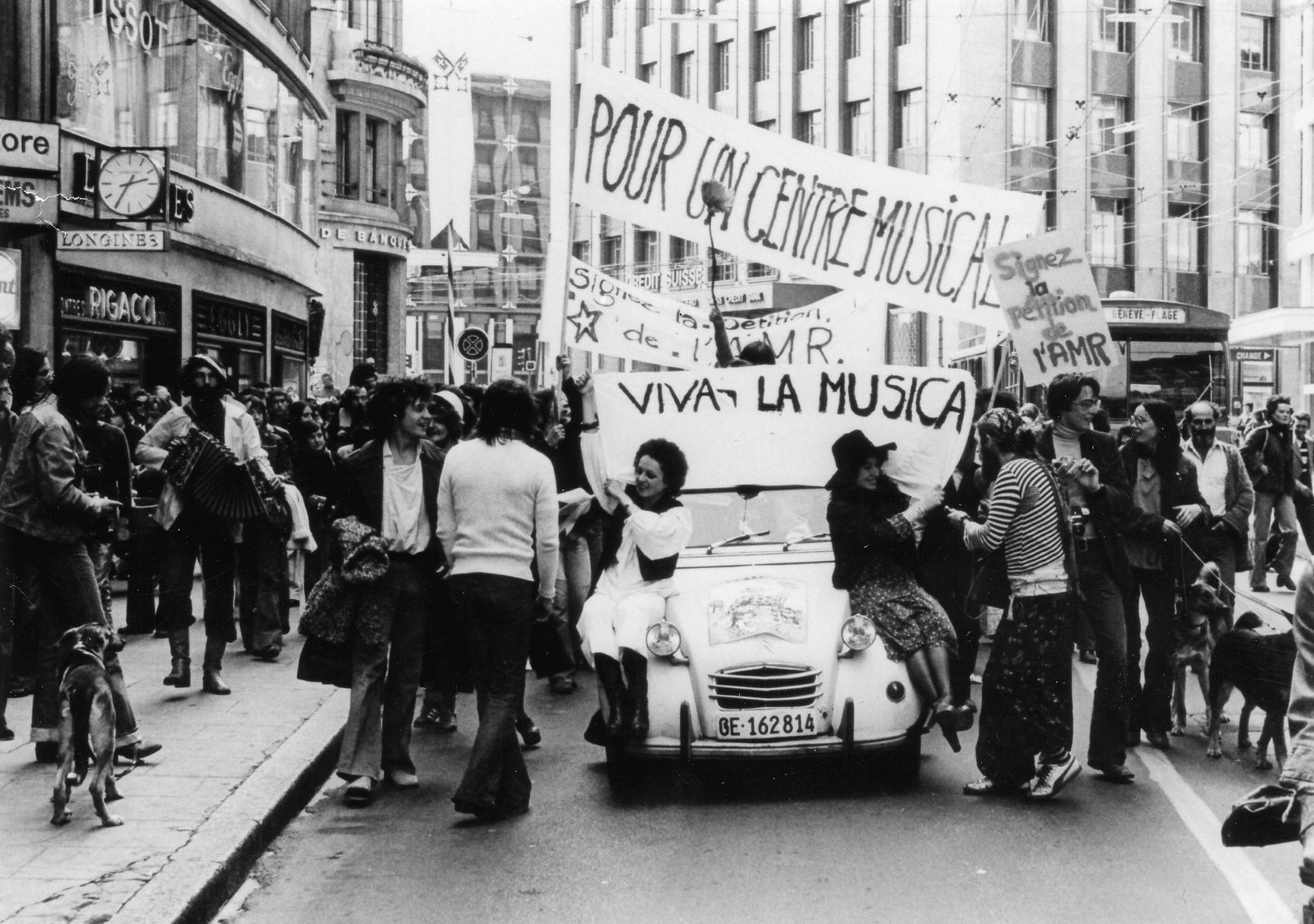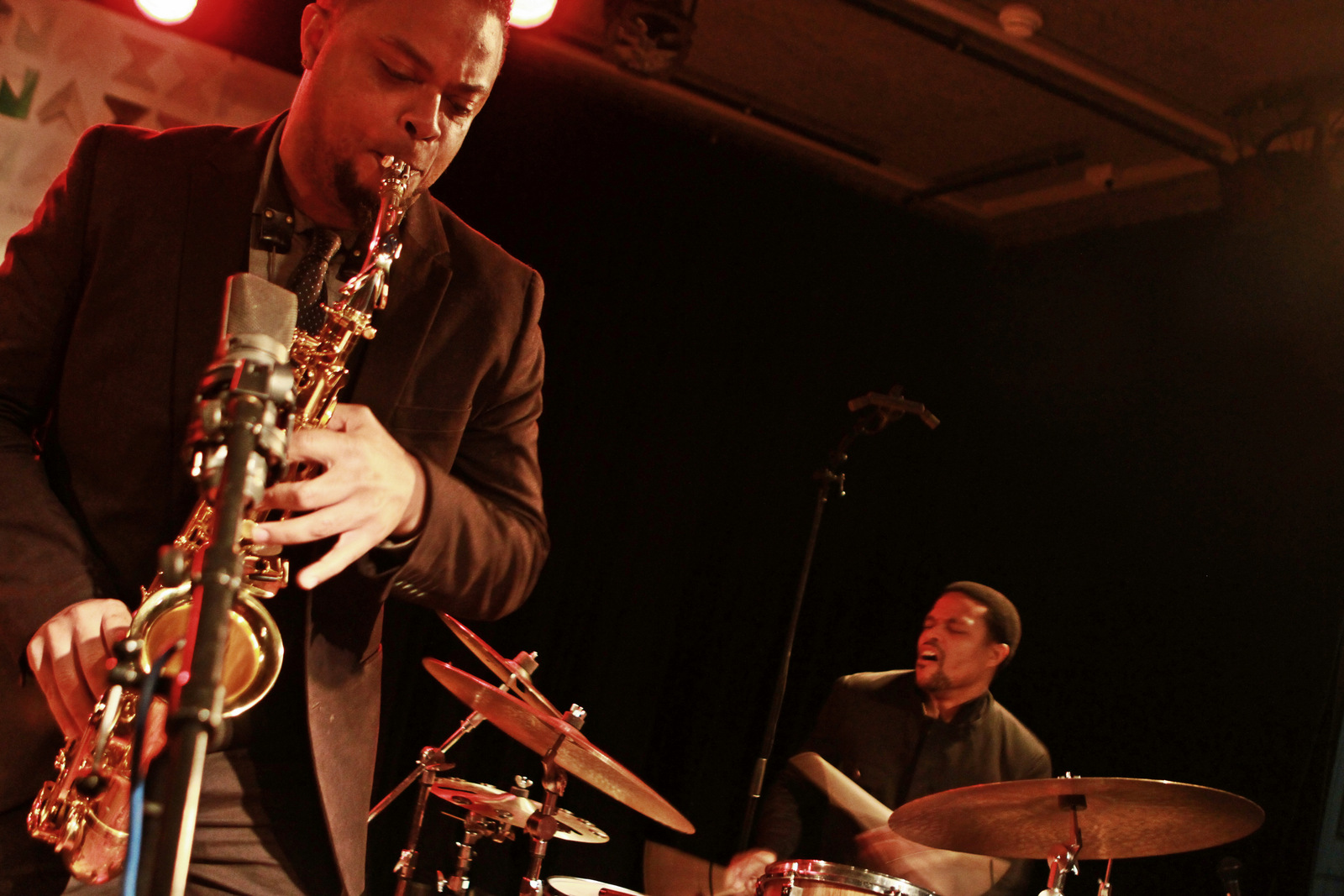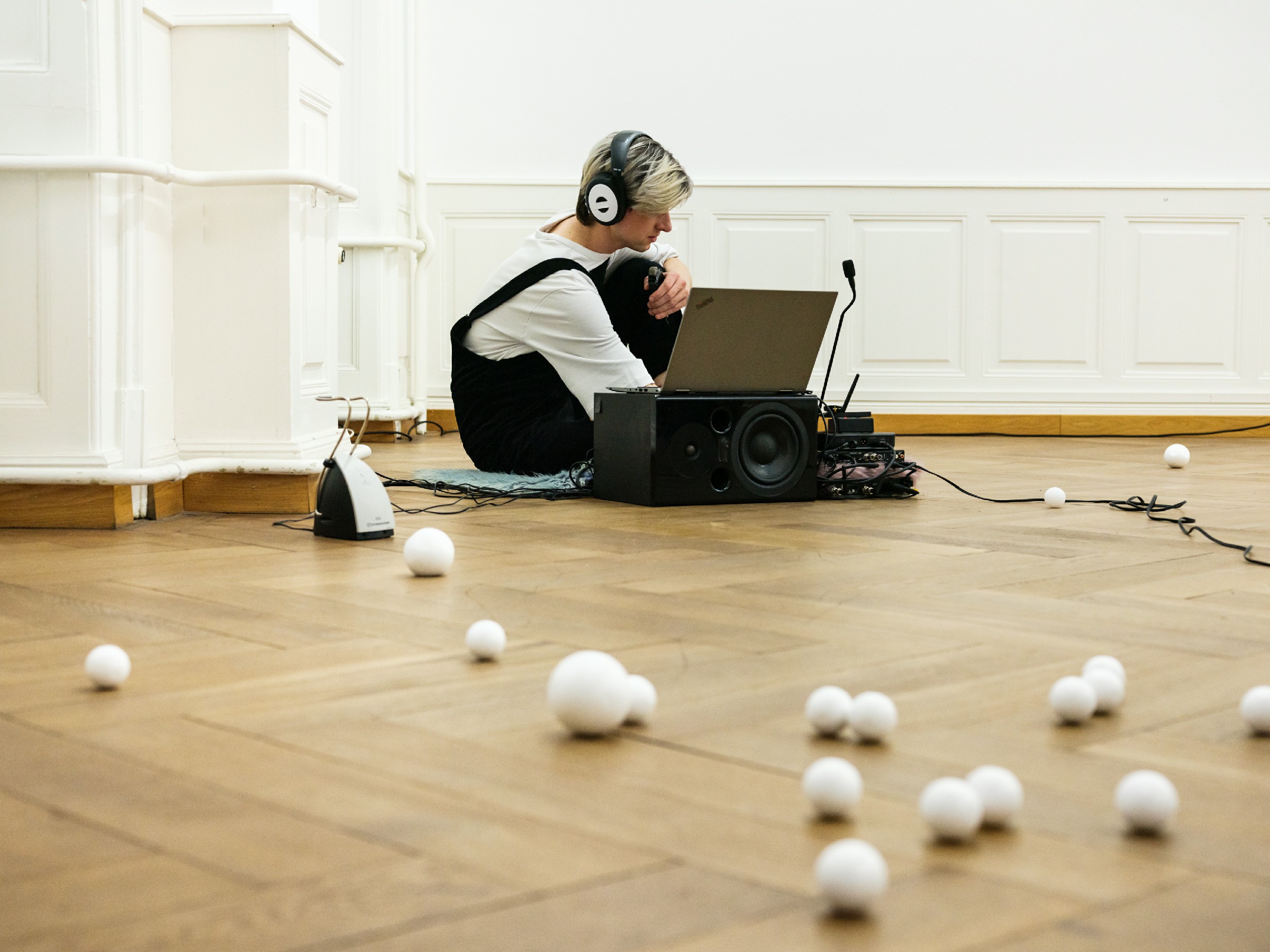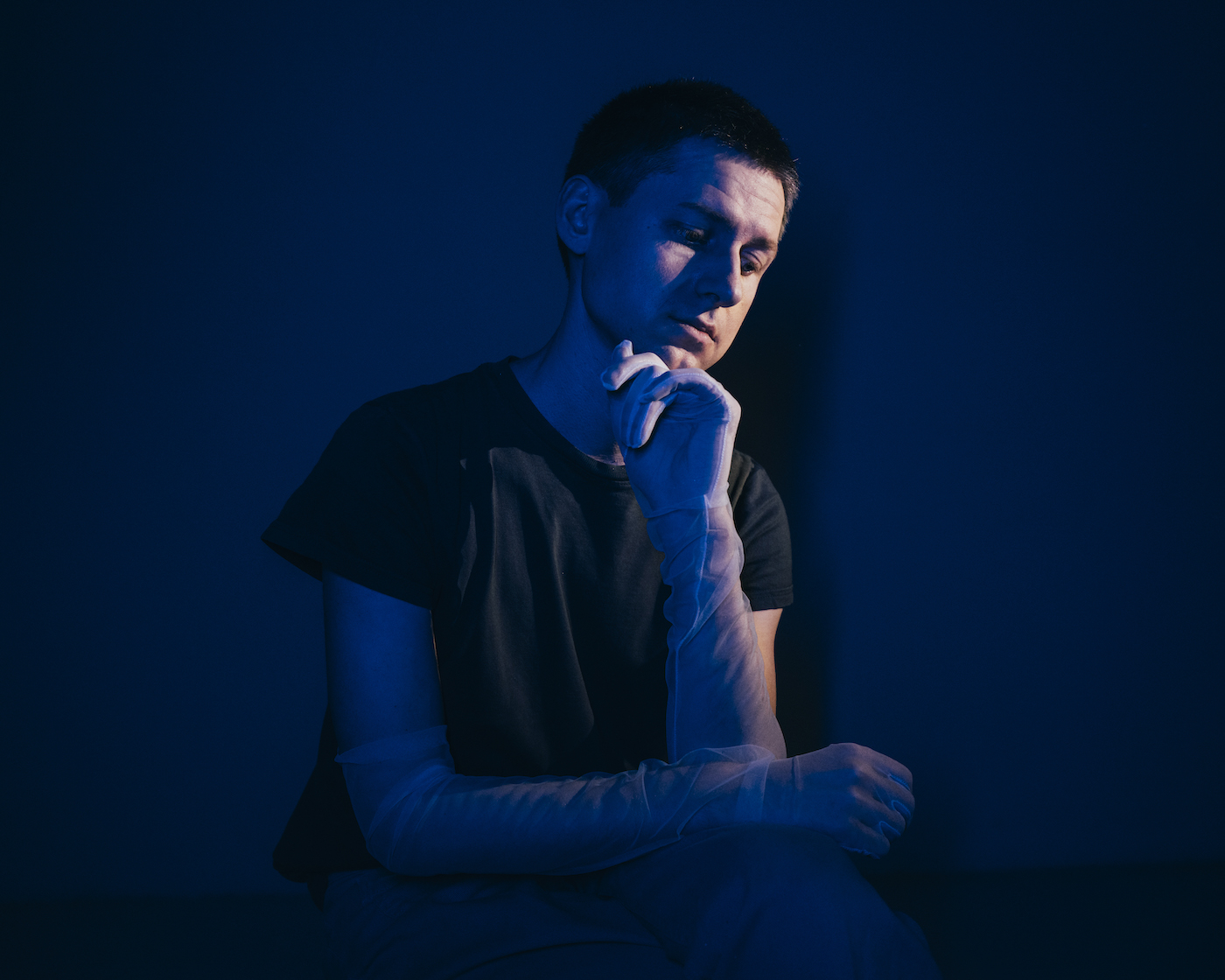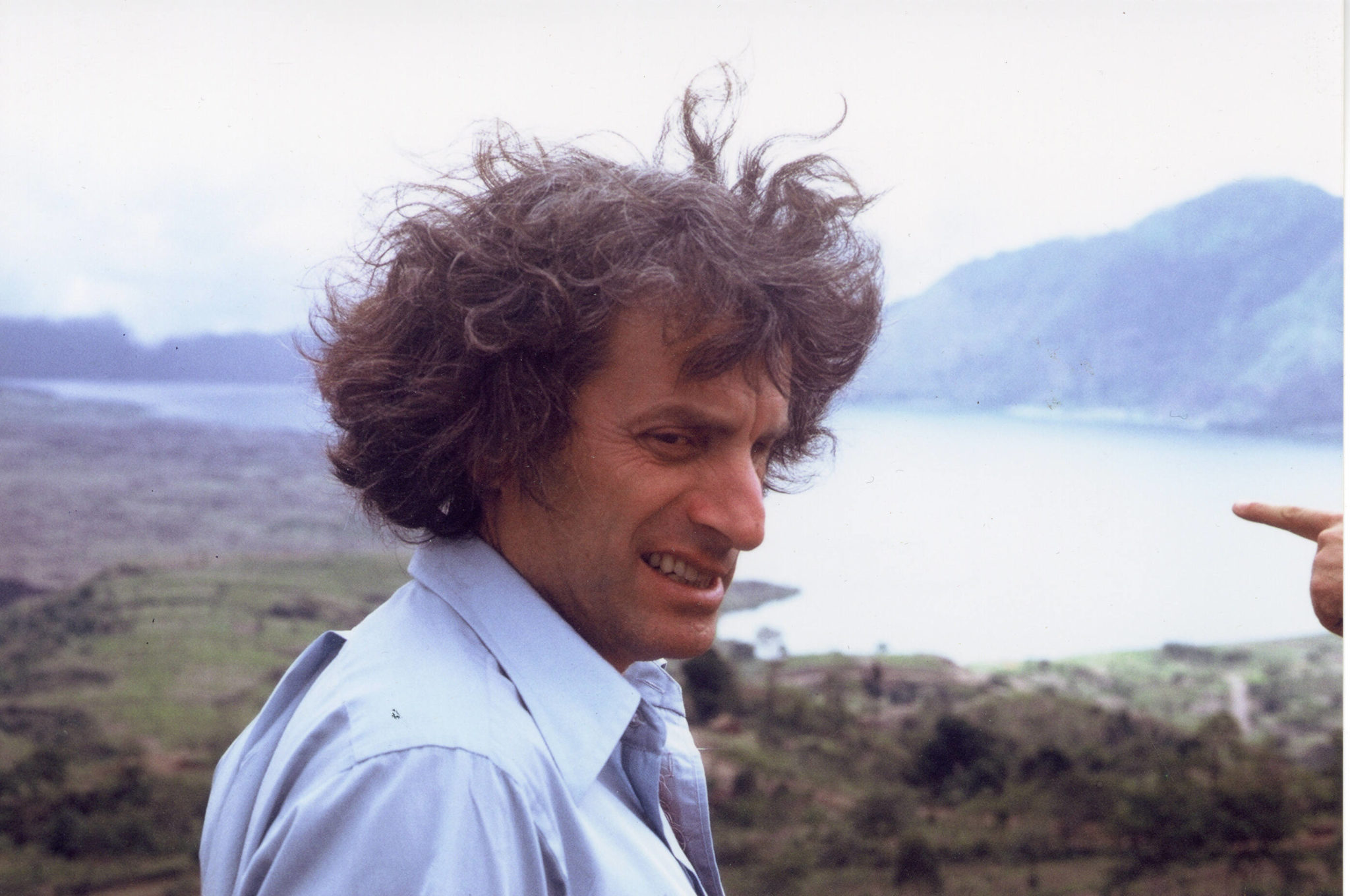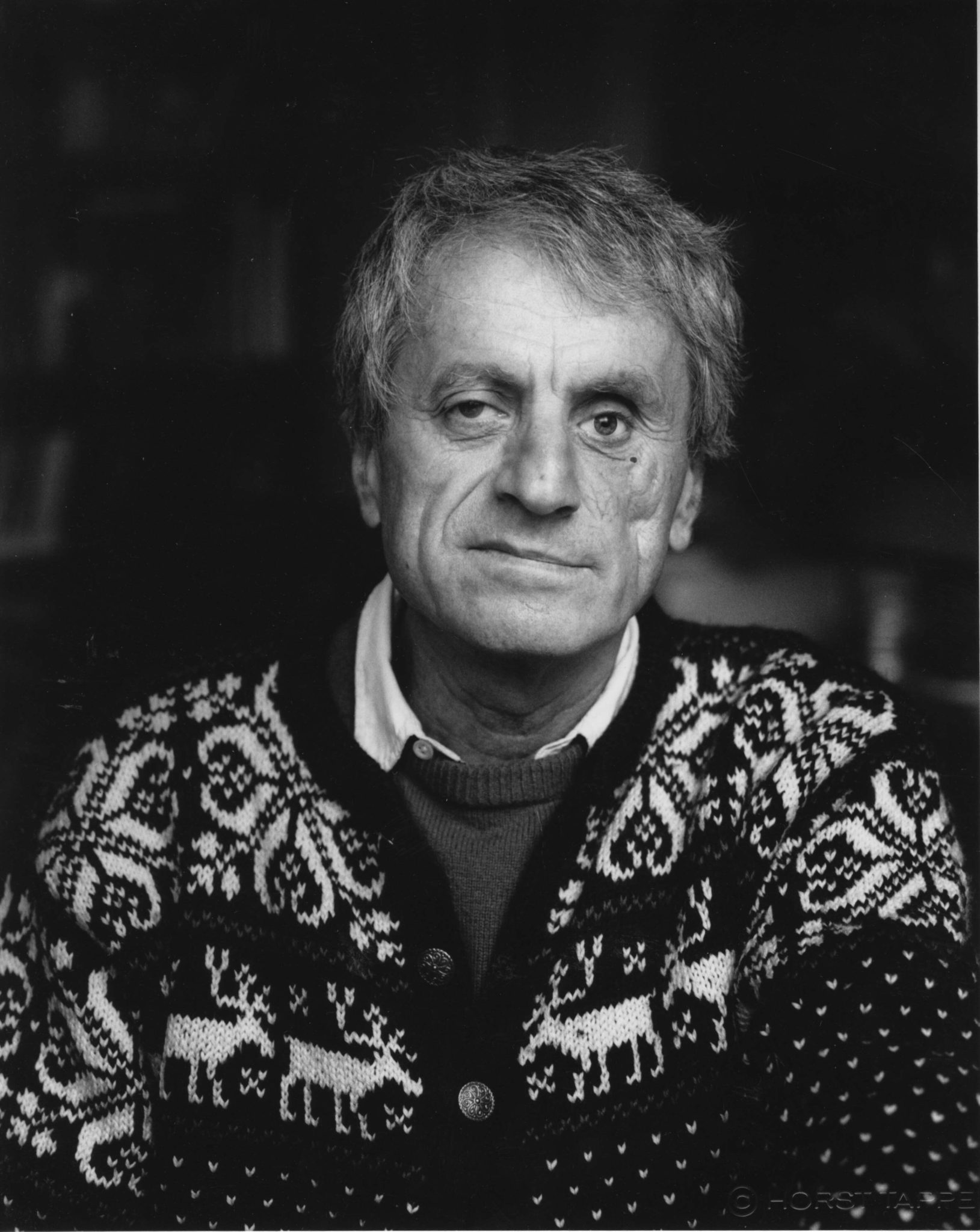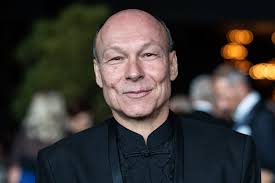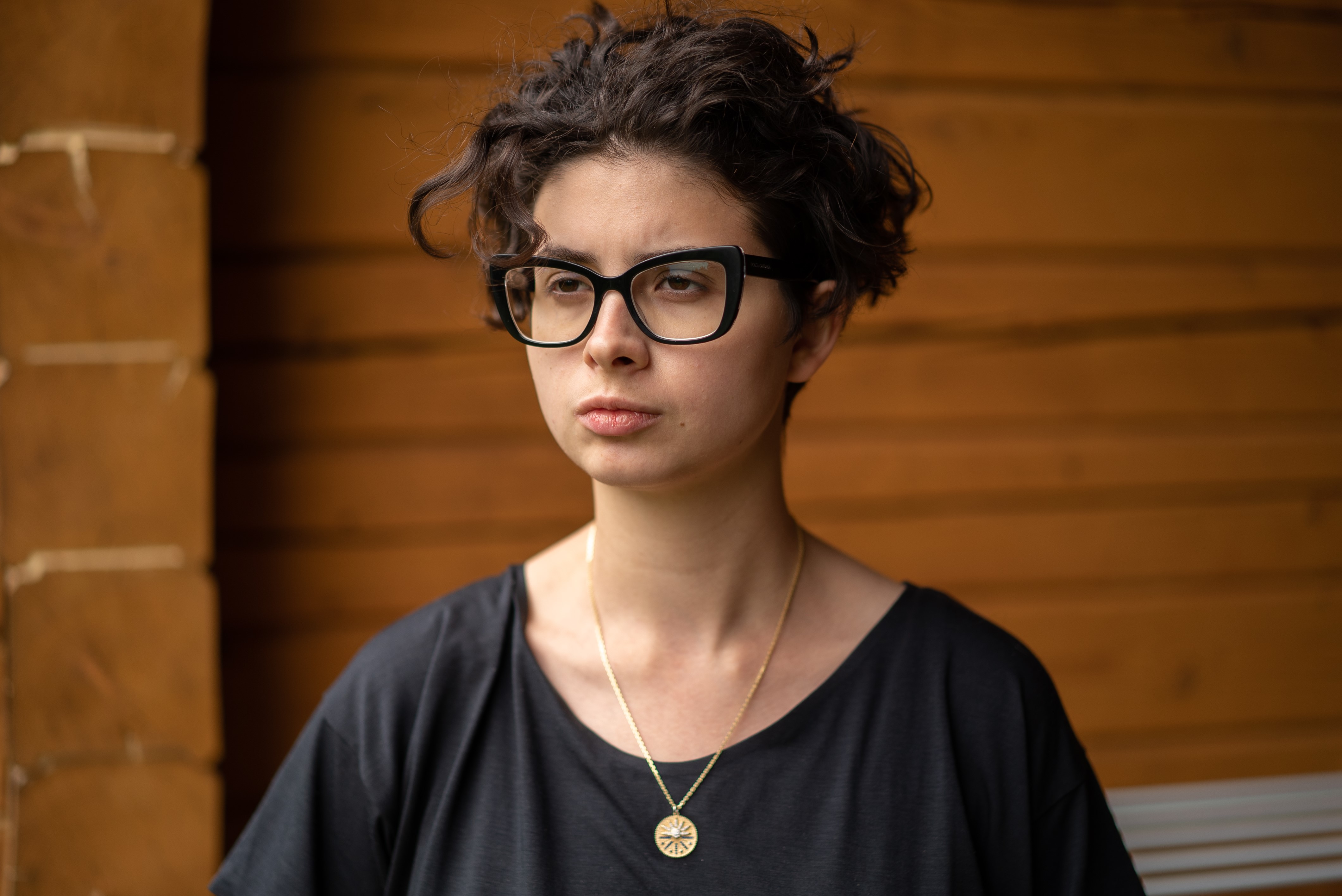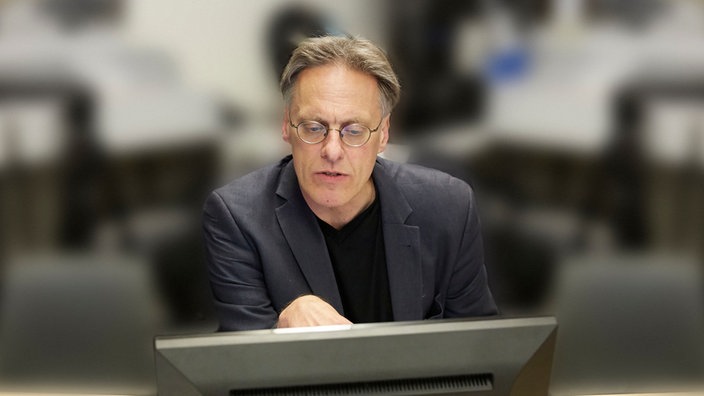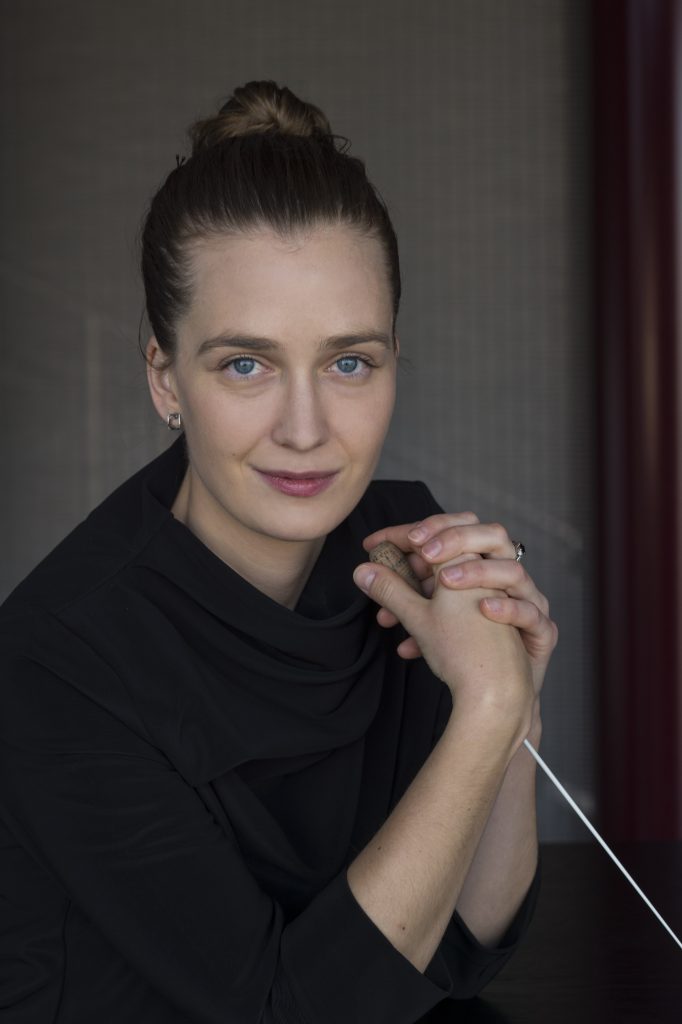Young composer Anda Kryeziu stages Ingmar Bergman’s cult film “Persona” as music theatre for Theater Basel. A musical reflection on voice, silence and identity.
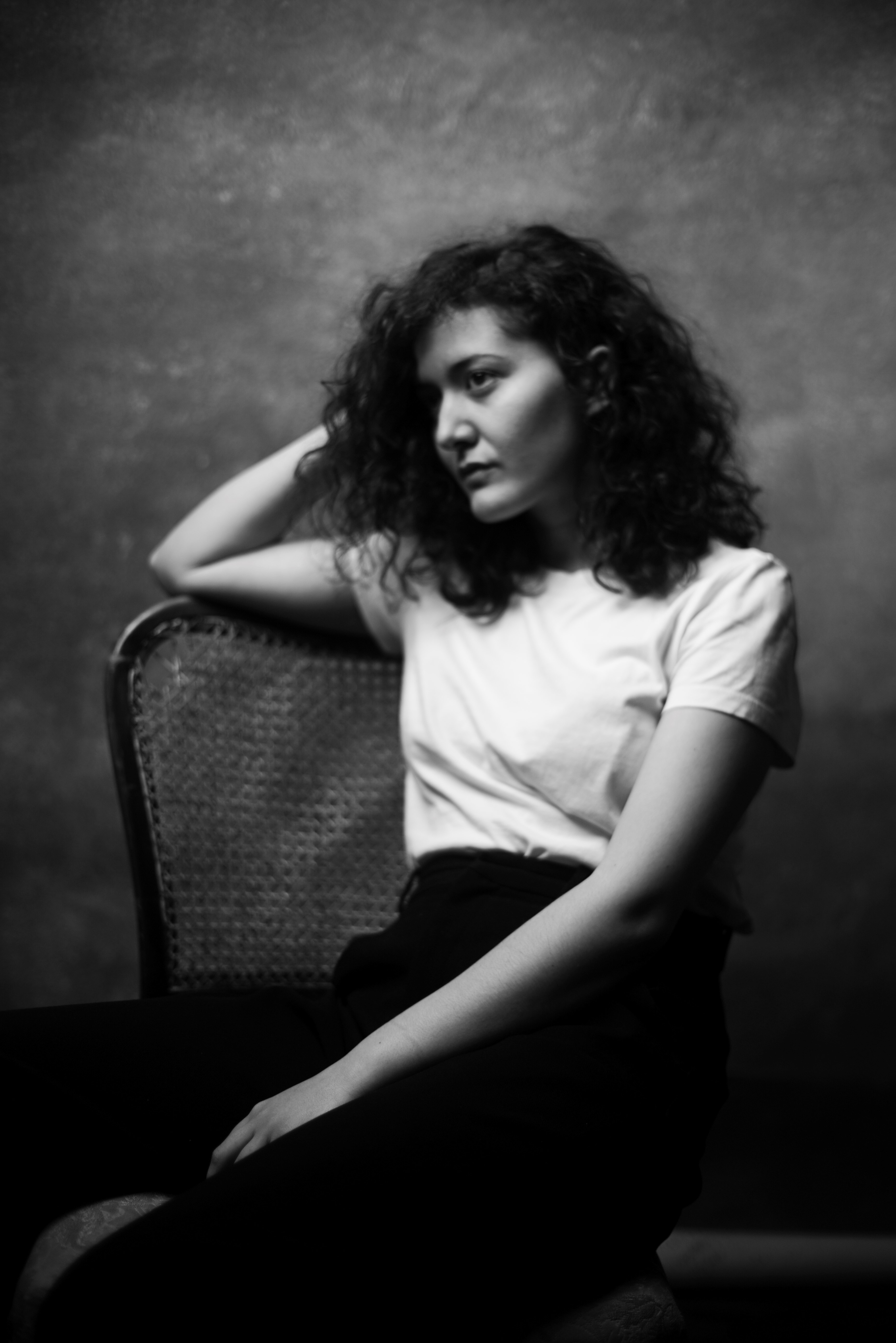
Jaronas Scheurer
Anda Kryeziu and I met for an interview on a rainy February evening in downtown Basel. The final rehearsal phase for her music theatre “Persona”, based on the film by Swedish director Ingmar Bergman, has just begun and she is facing a stressful final rehearsal month, with rehearsals from Monday to Saturday all day followed by revisions at night. One might think that the 30-year-old composer is under a lot of pressure, as writing a full-length musical for the renowned Theater Basel is not something everyone gets to do. But Anda Kryeziu seems surprisingly relaxed and at ease during the interview.
Originally from Kosovo, she studied piano and composition with Dieter Ammann in Bern, then composition and electroacoustic music in Basel and Berlin with Caspar Johannes Walter and Daniel Ott as well as cross-media composition with Wolfgang Heiniger. Her catalogue is already astonishingly extensive, featuring theatrical works, performances, orchestral compositions, works for instrumental ensembles with or without electronics, multimedia compositions, installations and acousmatic pieces. Kryeziu switches effortlessly between different formats and instrumentations and has already presented her works at renowned festivals such as Impuls Festival Graz, Neue Musik Rümlingen or the Munich Biennale. Her rich and diverse portfolio might be the reason for her ability to keep calm and relaxed, despite the prestigious Theater Basel commission.
Anda Kryeziu: «Infuse: Playtime» (2021), Ensemble Recherche.
Bergman’s “Persona”
She is setting Ingmar Bergman’s film “Persona” to music for Theater Basel and describes her work, for soprano, performer, four instruments and electronics as an “ambivalent music-theatrical format, oscillating between opera, theatre and performance”. Bergman’s 1966 cult movie revolves around two women, actress Elisabeth Vogler and nurse Alma. Elisabeth has suddenly stopped speaking and is therefore sent to be cured with Alma in a villa by the seaside. Due to Elisabeth’s silence, Alma takes over the speaking and tells Elisabeth about her innermost wishes, dreams and well-kept secrets from her childhood. A complex relationship develops between the two women and Elisabeth’s silence takes on very different facets, from arrogant distance to empathetic participation or passive aggressiveness. More and more, the boundaries between the two protagonists become blurred. Bergman’s film is on one hand an accurate chronicle of this unusual relationship and on the other hand a reflection on what actually makes a person and whether we are not just wearing different masks.
To what extent does the voice define our identity and what happens when the voice factor suddenly disappears? “Persona” captured Anda Kryeziu’s, as well as director Caterina Cianfarini’s and dramaturge Meret Kündig’s attention because it deals with voice, silence and identity in close connection.
Anda Kryeziu: «co-» (2016-2017), played by Theo Nabicht (Kontrabassklarinette), Seth Josel (E-Gitarre) und Gabriella Strümpel (Cello) from the Ensemble KNM Berlin.
How does one compose silence?
The main character’s silence of Perona’s central aspects. But how does one actually compose silence? Music consists of sounds and silence does not. Whereby, as Anda Kryeziu emphasises, “silence is not the same as stillness. Silence is the decision not to speak, while stillness is the absence of sounds”.
However, she did not need to actively compose silence: “silence was already there conceptually and actually triggered all the other musical ideas in the piece. For me, silence is the strongest and most blatant stylistic tool in this project. With Elisabeth’s silence, I try to shape all the dynamics and energy of the work and it serves as an igniting spark for many musical and dramatic situations.”
Anda Kryeziu sees the main character’s silence as a welcome challenge and composed it as an important factor. It is a similar story with the the other main character’s voice. Nurse Alma does the talking for both of them. For Kryeziu, the voice of soprano Álfheiður Erla Guðmundsdóttir, in the role of Alma, is the starting point for her composition. “The human voice is a complex mean of communication, a whole package of information, a semiotic system through which one can learn a great deal about identity,” says Kryeziu.
Guðmundsdóttir’s voice is alienated, distorted and multiplied by Kryeziu through electronics. “With the changes in the sound of the voice, I can also change the perception of the person speaking. She can suddenly sound masculine, childlike or totally destroyed.”
Anda Kryeziu: “Kreiswanderung im Raum”, from the production “Grosse Reise in entgegengesetzter Richtung” at the Münchener Biennale 2022. Jens Ruland (percussion) and the Ensemble Hand Werk.
The voice through the instruments
In addition, Kryeziu relates the voice to various counterparts: through loops, Guðmundsdóttir’s voice speaks to herself, through room-filling playback and re-recording it enters a dialogue with the space and with the help of so-called transducers, Kryeziu can project the sound of the voice or individual snippets of it onto the four instruments. The voice then kind of speaks through the instruments. A coherent metaphor for the fact that an identity operates in close connection and constant interaction with the outside world.
A voice speaking through many instruments is perhaps another fitting image for Kryeziu’s work. The identity theme emerges again and again, in her diverse work. “Identity never comes by itself in my opinion, as it cannot be separated from a socio-political context. We do not exist as abstract entities. We are the way we are because of our environment, our history and biography,” says Kryeziu. Her works are never autobiographical, but perhaps her migrant biography is one reason why the theme of identity regularly comes up.
Jaronas Scheurer
Music theatre “Persona” is a Theater Basel production and will be presented at Gare du Nord on March 4, 6, 7, 15, 16 17 – 2023, featuring: Álfheiður Erla Guðmundsdóttir: soprano, Alice Gartenschläger: performance, Jeanne Larrouturou: percussion, Chris Moy: guitar, Maria Emmi Franz: cello and Aleksander Gabrýs: double bass.
Álfheiður Erla Guðmundsdóttir, Ensemble Hand Werk, Jens Ruland, Wolfgang Heiniger, Caspar Johannes Walter, Theo Nabicht, Seth Josel, Gabriella Strümpel, Ensemble KNM Berlin, Ensemble Recherche
Neo-profiles:
Anda Kryeziu, Aleksander Gabrýs, Jeanne Larrouturou, Concept Store Quartet, Daniel Ott, Gare du Nord, Dieter Ammann


